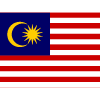THE recently announced Third Outline Perspective Plan and Eighth Malaysia Plan, made specific references to the subject of sports and recreation. A sum of RM540 million has been allocated for the next five years.
This does not include other health and recreational programmes to be carried out by the Health Ministry and local authorities.
The Seventh Malaysia Plan saw almost RM1 billion spent on sports programmes, forinfrastructure as well as athletes’ development. The results have been rathercommendable.
The implementation of sports development programmes in this country is guided bytwo main documents, the National Sports Policy of 1988 and Sports Development Act 1997.
In this regard, the organisation and management of sports associations is continuously reviewed and upgraded to ensure a professional, ‘no-nonsense’ approach towards sports, by both the public and private sectors.
In order to promote high performance sports, impressive sports arenas have beenbuilt at the state and national levels. The former include the Penang International Sports Arena (PISA) and the Sports Complex in the Federal Territory of Labuan.
The National Sports Complex at Bukit Jalil, equipped with modern facilities, provide a suitable venue for centralised training at the national level. It was the mainstay of the XVI Commonwealth Games in Kuala Lumpur.
In the run-up to the 1998 Games, the National Sports Council successfully built a pool of young talent who went on to become worthy participants of the second most prestigious sports event in the world.
Malaysia emerged fourth out of the seventy participating countries.
The country also put up a commendable show in the 1998 Asian Games during which the highest number of medals were obtained since 1954.
In addition, we came out second at the 1999 SEA Games. Also, the highest number of athletes passed the qualifying marks for a place in the Malaysian Sydney 2000 Olympic Games team.
The many benefits of long-term strategies have convinced the sports authority to embark on a programme to develop selected sports to prepare athletes for the AsianGames in 2006 and the Olympic Games in 2008.
On the management of sports activities, Malaysia has progressed by leaps and bounds. The acid test of organising the Kuala Lumpur ’98-XVI Commonwealth Games was passed with flying colours.
Malaysia hosted an assortment of international events like Le Tour de Langkawi in 1998, 2000 and 2001, the Formula One Championships in 1999, 2000 and 2001, the Junior World Cup Hockey Competition in 1999, and the World Table Tennis
Competition, Thomas Cup Finals, Asian Junior Basketball Championship, and the Asian Boat Regatta in 2000.
These efforts have not only provided extra mileage to the development of the sports industry but contributed significantly to the growth of the tourism industry.
It is acknowledged that besides achieving excellence in international competitions and promoting the country’s image, sports is also an avenue to promote a healthy lifestyle as well as goodwill and rapport among Malaysians.
Participation in sports activities also helps mould social competence and character, as well as promotes team spirit and a ‘never-say-die’ attitude.
In essence, these were the original purpose of sports, which is actually as old as human civilisation.
The real impact of sports was mostly felt between the fifth and third centuries BC, at the time when Greek art, literature, music, poetry and philosophy flourished.
A number of sports competitions were organised in ancient Greece, each in honour of a different deity. The Olympic Games held in honour of Zeus, the king of gods, was considered the most important.
Begun in 776 BC the Games were held every four years in a spirit of peace, harmony, unity and fellowship, with political differences temporarily put aside.
The winners of competitions were honoured as national heroes and became models for youths to emulate.
The Games were halted in the fourth century under the Roman rule, only to be revived in the late nineteenth century.
Today, although the original Olympic spirit of friendship may have wavered a bit, the Games are still the most prestigious sports event in the world.
Sports as a form of recreation has been a subject of intellectual discourse since the era of the great philosopher Aristotle. He proposed a model where recreation lies between amusement and contemplation.
Amusement is a passive reception on the part of the participants, while contemplation is the act of considering something with attention.
Recreation, therefore, can be regarded as the voluntary and active participation in leisure activities that are meaningful and enjoyable to the person involved.
More recently, American psychologists Abraham Maslow enumerated the importance of a number of human needs, beginning with basic physiological needs and culminating in self-actualisation.
Just below the pinnacle of the hierarchy, Maslow listed the human need for aesthetics and cognition, comprising knowledge and understanding. These needs are mostly satisfied through recreational activities.
Almost six hundred years prior to Maslow, a Muslim scholar Ibn Khaldun ranked five desires in ascending order. According to him, the lowest desire is fulfilling bodily appetites, while the highest is the desire related to leisure.
Ibn Khaldun who lived between 1332-1395 C.E. must have come out with this ingenious model through his observation of the ways Muslims spend their free time.
It is true that from illustrated manuscripts, evidence has been gathered on the nature of sports and recreational activities of Muslims during the heyday of the Islamic civilisation.
These range from celebrations, banquets and picnics through comparatively tranquil games such as backgammon and chess, to the mounted archery contests organised as part of chivalry training.
Persian, Indian and Turkish poets such as Nizami, Saadi, Hafiz, Amir Khusraw and Nevai, include accounts of wrestling bouts, games of polo, hunting, music and other recreation in their poems.
It is reported that Shah Abbas I (1586-1628) who made Isfahan his capital would sit high up in his royal pavilion overlooking the huge square which he built near the bazaar, to watch the activities taking place there, including polo.
As for children’s games, many manuscripts of the sixteenth century reveal that the same types of games played then are still popular today. These include spinning top and yoyo.
We should therefore have no qualms in trying to excel in sports and recreation. Taken in appropriate doses, they can be the cure for many diseases, as well as fulfill our natural needs and desires.
When the inventor, Thomas Edison was asked how many hours a day he worked, his reply was, “I play sixteen hours a day.”
While his work may look tedious and complex to others, Edison found it as a form of recreation, where he could let his curiosity, imagination, energy and ingenuity run loose.
And we should all thank God for his ‘recreational frolics’, for otherwise we would all still be in darkness.

